
The fulmars are tubenosed seabirds of the family Procellariidae. The family includes two extant species and two extinct fossil species from the Miocene.

Thomas Bewick was an English wood-engraver and natural history author. Early in his career he took on all kinds of work such as engraving cutlery, making the wood blocks for advertisements, and illustrating children's books. He gradually turned to illustrating, writing and publishing his own books, gaining an adult audience for the fine illustrations in A History of Quadrupeds.
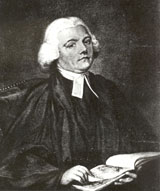
Gilbert White was a "parson-naturalist", a pioneering English naturalist, ecologist, and ornithologist. He is best known for his Natural History and Antiquities of Selborne.

William Bartram was an American botanist, ornithologist, natural historian and explorer. Bartram was the author of an acclaimed book, now known by the shortened title Bartram's Travels, which chronicled his explorations of the southern British colonies in North America from 1773 to 1777. Bartram has been described as "the first naturalist who penetrated the dense tropical forests of Florida".

Thomas Pennant was a Welsh naturalist, traveller, writer and antiquarian. He was born and lived his whole life at his family estate, Downing Hall near Whitford, Flintshire, in Wales.
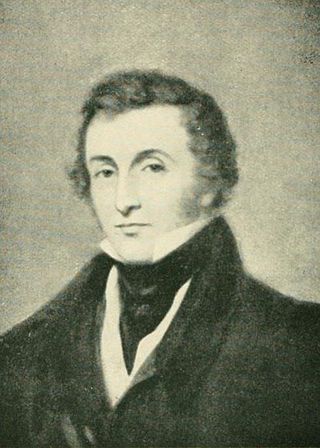
Sir William Jardine, 7th Baronet of Applegarth FRS FRSE FLS FSA was a Scottish naturalist. He is known for his editing of a long series of natural history books, The Naturalist's Library.

William Yarrell was an English zoologist, prolific writer, bookseller and naturalist admired by his contemporaries for his precise scientific work.

James Maxwell McConnell Fisher was a British author, editor, broadcaster, naturalist and ornithologist. He was also a leading authority on Gilbert White and made over 1,000 radio and television broadcasts on natural history subjects.
Richard Thomas Mabey is a writer and broadcaster, chiefly on the relations between nature and culture.

Harold John Massingham (25 March 1888 – 22 August 1952) was a prolific British writer on ruralism, matters to do with the countryside and agriculture. He was also a published poet.

Mark Cocker is a British author and naturalist. He lives with his wife, Mary Muir, and two daughters in Claxton, Norfolk. The countryside around Claxton is a theme for two of his twelve books.
Verlyn Klinkenborg is an American non-fiction author, academic, and former newspaper editor, known for his writings on rural America.
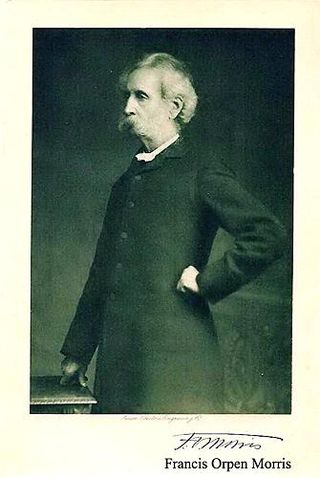
Francis Orpen Morris was an Anglo-Irish clergyman, notable as "parson-naturalist" and as the author of many children's books and books on natural history and heritage buildings. He was a pioneer of the movement to protect birds from the plume trade and was a co-founder of the Plumage League. He died on 10 February 1893 and was buried at Nunburnholme, East Riding of Yorkshire, England.

The Natural History and Antiquities of Selborne, or just The Natural History of Selborne is a book by English parson-naturalist Gilbert White (1720–1793). It was first published in 1789 by his brother Benjamin. It has been continuously in print since then, with nearly 300 editions up to 2007.
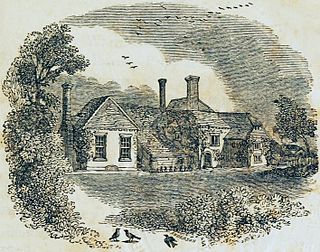
John Anderson was a Scottish wood-engraver and illustrator, a pupil of the British wood-engraver Thomas Bewick.

A History of British Birds is a natural history book by Thomas Bewick, published in two volumes. Volume 1, Land Birds, appeared in 1797. Volume 2, Water Birds, appeared in 1804. A supplement was published in 1821. The text in Land Birds was written by Ralph Beilby, while Bewick took over the text for the second volume. The book is admired mainly for the beauty and clarity of Bewick's wood-engravings, which are widely considered his finest work, and among the finest in that medium.
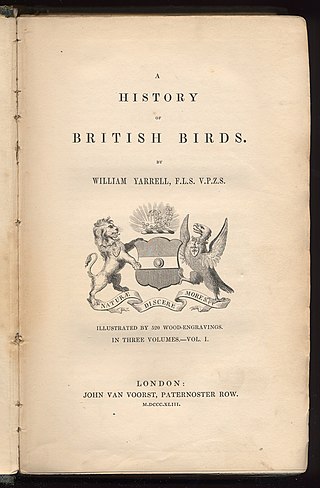
William Yarrell's A History of British Birds was first published as a whole in three volumes in 1843, having been serialised, three sheets every two months, over the previous six years. It is not a history of ornithology but a natural history, a handbook or field guide systematically describing every species of bird known to occur in Britain. A separate article of about six pages, containing an image, a description, and an account of worldwide distribution, together with reports of behaviour, is provided for each species.

The Ornithological Dictionary; or Alphabetical Synopsis of British Birds was written by the English naturalist and army officer George Montagu, and first published by J. White of Fleet Street, London in 1802.

The Selborne Society or Selborne League is Britain's oldest national conservation organization and a registered charity. It was formed in November 1885 to "perpetuate the name and interests of Gilbert White, the Naturalist of Selborne", and followed the philosophy of observation rather than collection. Its object was the preservation of birds, plants and pleasant places.


















